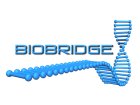Relevant projects
“PRISTIN: Effect of Pollutants on pond biodiveRsIty acrosS a climaTe and land use gradIeNts” (PID2022-140121NA-I00)
[Mireia Bartrons, PI, Jordi Villà-Freixa, Group member, 2023-2027]

Pollution, especially from pesticides and organohalogen compounds (OHCs), threatens pond biodiversity and ecosystem functions, yet regional impacts remain unclear.
PRISTIN will study 150 European ponds to assess pollutant effects and how climate change modulates these interactions.
It will integrate field data with biodiversity and ecosystem metrics, modeling pollutant impacts across environmental gradients.
Findings will inform policies and practices to reduce chemical pollution and protect biodiversity.
- Why ponds concentrate nutrients: the roles of internal features, land use, and climate. In: Hydrobiologia, 2025.
“Exploring peptide/MHC dissociation landscapes using Hierarchical Natural Move Monte Carlo” (BIO2017-83650- P)
[Bernhard Knapp, PI, 2018-2019; Jordi Villà-Freixa, PI, 2019-2021]

Peptide binding to MHCs is crucial for immune response, yet current tools predict binding without explaining structural mechanisms.
Molecular dynamics (MD) can reveal peptide behavior but struggle to capture detachment due to high computational costs.
We combined advanced sampling techniques to simulate peptide/MHC dissociation efficiently across multiple alleles.
This approach enables structural insights with broad applications in drug discovery for cancer, allergies, and autoimmune diseases.
- Dynamic chromatin association of IκBα is regulated by acetylation and cleavage of histone H4. In: EMBO Reports, no. e52649, 2021, ISSN: 1469-3178.
- SBMOpenMM: A Builder of Structure-Based Models for OpenMM. In: J Chem Inf Model, vol. 61, no. 7, pp. 3166-3171, 2021, ISSN: 1549-960X.
EU-FP7 325146. SOCIAL ECOSYSTEM FOR ANTI-AGING, CAPACITATION AND WELLBEING. SEACW (2013-2015)
The project aims to build an ICT-based ecosystem for training, literacy, and awareness to support active and healthy aging.
It targets social inclusion agents with a collaborative platform and the elderly with tailored tools and training materials.
User-friendly technologies like SmartTVs will help seniors apply knowledge and stay engaged in lifelong learning.
Piloted in 15 regions with 15,000 participants, the project also includes studies on ICT’s role and impact in healthy aging.
- Population ageing and ICT: an exploratory review of technology innovation through digital applications. Biosignals 2014, 7th International Conference on Bio-Inspired Systems and Signal Processing. Joint Conference on Biomedical Engineering Systems and Technologies, BIOSTEC 2014, 331-338, ScitePress, 2014.
Marató TV3: “Modulation of immune receptors function as a novel therapeutic strategy for acute CNS damage” (2012-2015)

The existence of different types of immune receptors with the capability to regulate microglia/macrophage function opens a new window for the development of new neuroprotective strategies in acute CNS damage. This project aims to analyse the therapeutic potential of some of those proteins (CD200R, TREM-2 and the CD300 family of receptors) in different experimental in vitro and in vivo models. This proposal will be developed by 5 teams covering a wide range of expertise including bioinformatics, molecular immunology, neurobiology, neuropathology, and behavioural neuroscience. The role of the CBBL is to provide support on protein structure and protein interaction predictions.
- Methylglyoxal Produced by Amyloid $beta$-Peptide-Induced Nitrotyrosination of Triosephosphate Isomerase Triggers Neuronal Death in Alzheimer Disease. In: J. Alzheimer Dis, vol. 41, pp. 273–288, 2014, ISSN: 1875-8908.
aScidea (2011-2013)
The promotion of aScidea Computational Biology Solutions, SL, (twitter: @ascidea) became an important activity in the lab for some years. Currently, the company is lead by former lab members, although the CBBL members formally discontinued their collaboration with the company in 2013.
ActivA (2009-2011)
We collaborated with O2HLink on the AVANZA-funded ActivaCentral project, developing a WebGL portal for 3D visualization of biological data.
The platform supported cystic fibrosis rehabilitation by connecting patients, researchers, and clinicians in a shared digital space.
Our lab contributed scientific tools, including a 3D model of the CFTR protein and web service workflows for structural prediction.
Though results fell short of expectations, the project enabled future work in web technologies, workflows, and CFTR research.
- New model of CFTR proposes active channel-like conformation. In: J. Chem. Inf. Model., vol. 52(7), pp. 1842–1853, 2012.
VPH NoE (2008-2013)
The Virtual Physiological Human Network of Excellence (VPH NoE) has been designed with ‘service to the community’ of VPH researchers as its primary purpose. The aims of the network range from the development of a VPH ToolKit and associated infrastructural resources, integration of models and data across the various relevant levels of physiological structure and functional organisation, through to VPH community building, training activities and support.
- Developmental biology and mathematics: the rules of an embryo. In: Giráldez, Fernando; Herrero, Miguel A (Ed.): Mathematics, Developmental Biology and Tumour Growth, vol. 492, pp. 1–12, Am. Math. Soc. and Real Soc. Mat. Esp, 2009.
- Amyloid-dependent triosephosphate isomerase nitrotyrosination induces glycation and tau fibrillation. In: Brain, vol. 132, no. 5, pp. 1335-1345, 2009.
- The Virtual Physiological Human Toolkit. In: Phil. Trans. R. Soc. A, vol. 368, pp. 3925–3936, 2010.
- Multiscale Simulations of Protein Aggregation. In: Curr. Prot. Pept. Sci., vol. 12, pp. 221–234, 2011.
EU-FP6. QosCosGrid (2006-2009)
In the FP6 STREP QosCosGrid project, our lab contributed Adun and ByoDyn as use cases for quasi-opportunistic simulation of complex systems.
The project focused on enabling high-performance simulations of complex, interdependent systems using enhanced grid computing.
It proposed grid-based solutions as cost-effective alternatives to supercomputers for modeling emergent behaviors in natural and man-made systems.
Now continued as an active foundation, the project laid groundwork for future developments in distributed simulation technologies.
- The QosCosGrid project: Quasi-opportunistic supercomputing for complex systems simulations. description of a general framework from different types of applications.. In: Proceedings of Ibergrid 2007 conference, Santiago de Compostela, 2007.
- Optimal Experimental Design in the Modelling of Pattern Formation. In: LNCS, vol. 5101, pp. 610-619, 2008.
- Developmental biology and mathematics: the rules of an embryo. In: Giráldez, Fernando; Herrero, Miguel A (Ed.): Mathematics, Developmental Biology and Tumour Growth, vol. 492, pp. 1–12, Am. Math. Soc. and Real Soc. Mat. Esp, 2009.
- Computational Approaches to the Modelling of Topological and Dynamical Aspects of Biochemical Networks. Universitat Pompeu Fabra, 2010, ISBN: 978-84-694-2117-8.
EU-FP6. BioBridge (2006-2009)
In this FP6 STREP project, we explored diagnostic and prognostic tools for COPD using integrated clinical data and simulation, sparking our interest in translational medicine.
To address fragmented omics data, the BioBridge portal was developed to support SMEs with tools for data integration and multilevel analysis.
It combines structured genomic, proteomic, and metabolomic databases to model affected metabolic pathways in chronic diseases.
These models feed into a simulation environment aimed at enhancing understanding of complex disorders through integrated systems biology.
- Integration of transcriptomics data into systems biology modeling in the BioBridge portal. In: Schneider, Roland Wagner Josef Küng Kristan (Ed.): Schriftenreihe Informatik 26. BIRD08 2nd International Conference on Bioinformatics Research and Development., pp. 75–81, Schriftenreihe Informatik 26, 2008, ISBN: 978-3-85499-422-0.
- Knowledge Management for Systems Biology; a general and visually driven framework applied to translational medicine. In: BMC Syst. Biol., vol. 5, pp. 38, 2011.




